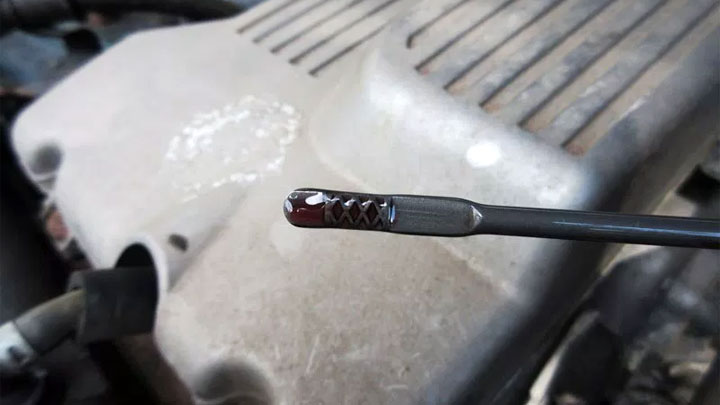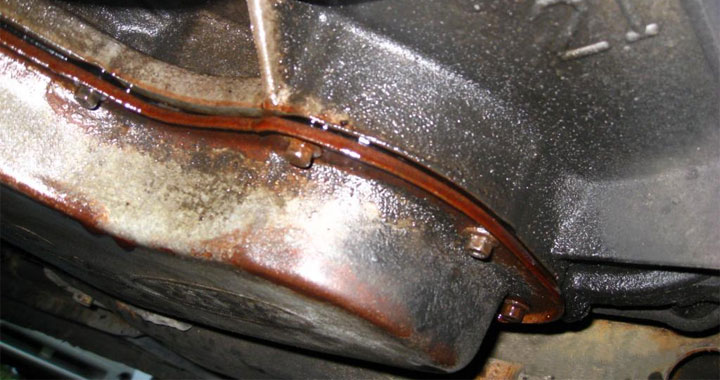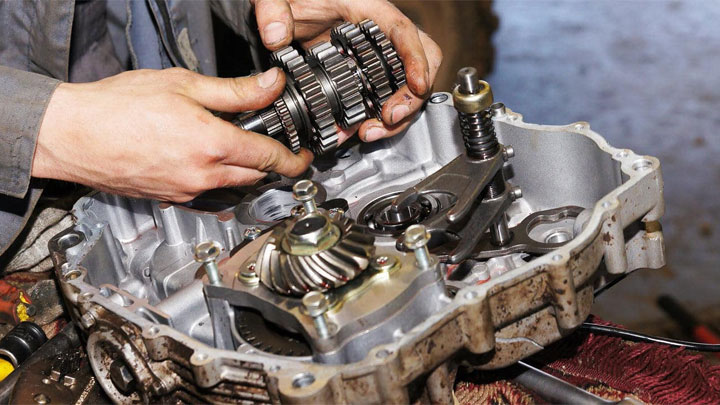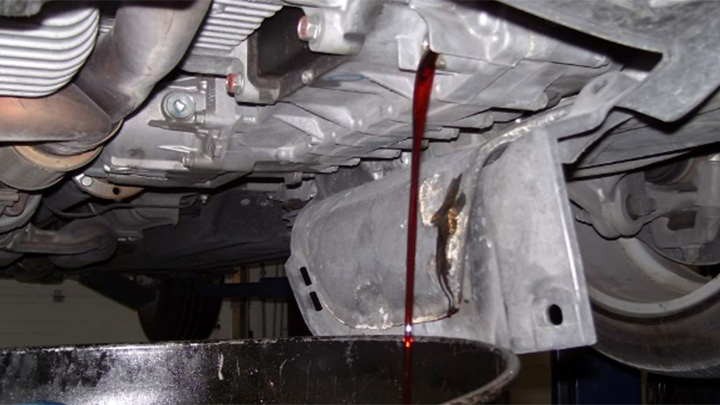Last Updated on June 2, 2022
If some fluid is good, more must be better right? That couldn’t be farther than the truth when it comes to transmission fluid. You don’t want too much, and you certainly don’t want too little. For optimal performance, it needs to be just right.
But how do you know if there’s too much transmission fluid in the system, and how does it differ from a system with low transmission fluid? We’ll break down everything you need to know here, that way you can figure out what’s going on and keep your vehicle on the road!
How Much Transmission Fluid Does a Car Hold?
It really depends on the type of vehicle you drive. Most cars take about 4 to 10 quarts of transmission fluid, but some passenger vehicles can take as much as 17 quarts!
Because of this it’s important that you know where to look to figure out how much transmission fluid your vehicle takes. The first place you can look is your owner’s manual. This will tell you exactly how much oil your transmission takes, and it’ll tell you what kind of fluid to use.
If you don’t have your owner’s manual anymore, you can reach out to a local dealership or use Google to track it down. Just be careful when using Google that you’re only getting information from a reliable source.
Why Would Someone Add Too Much Transmission Fluid?

Most of the time when someone adds too much transmission fluid it’s a mistake. They might not have drained the old transmission fluid out completely, or they might have thought that the tank was bigger than it is.
Another common mistake is that they check the transmission fluid when it’s cold instead of hot. Transmission fluid expands when it’s hot, and the only correct way to check your vehicle’s transmission fluid level is when the engine is at operating temperature.
Signs You Overfilled Your Transmission Fluid
You’re here because you think there’s too much transmission fluid in your vehicle, so let’s take a dive into some of the symptoms you’ll see if you do have an overfilled transmission.
Keep in mind that while these are signs that you have an overfilled transmission, some of the symptoms could come from other problems too!
#1 – High Fluid Level on Dipstick

Your transmission has a dipstick for a reason, so if you’re trying to figure out if there’s too much transmission fluid, it’s the first place you want to look.
Keep in mind that to accurately check the transmission fluid on the dipstick the engine needs to be at operating temperature. Of course, if you’re unable to get your vehicle to the full operating temperature for one reason or another, that doesn’t mean you can’t take a look at the dipstick to get an idea.
The reason you need to check the transmission fluid when it’s hot is that the fluid expands when heated. This means if you’re checking it when it’s cold and it’s already too high, it’s only going to worsen if you’re checking it at operating temperature.
See Also: Transmission Fluid Color Chart
#2 – Trouble Shifting Gears

Transmission fluid is there to keep everything lubricated and shifting smoothly. While the right amount of transmission fluid doesn’t create any problems, too much can make space a premium in the system.
In automatic transmission vehicles you’ll feel “harder” shifts, and in a manual you’ll find that you need to apply a little more force to the shifter to get to the gear you want. Either way, shifting won’t be as easy as it should be, and you’re wearing out all the components that go into the process.
#3 – Engine Overheating

One of the purposes of transmission fluid is to keep the system from overheating, so it might not make too much sense that too much can lead to it overheating.
But the problem is that when there’s too much transmission fluid in the system it’s simply not working as it should. It won’t be as effective at cooling things down, leading to an overheating engine because of too much fluid!
#4 – Leaking Fluid

Too much transmission fluid leads to an excessive pressure build-up, and the seals can only handle so much. When this happens it can lead to some of the seals cracking or failing, and you’ll start to notice transmission leaks as a result.
While this will slowly get your transmission fluid back to the right level, it’s not going to stop once it gets there. So instead of having too much transmission fluid, you won’t have enough fluid soon. If you have a leaking seal you need to drain the entire system and replace the seal to fix the problem.
#5 – Odd Noises

Anytime something on your vehicle isn’t working as it should, it will start making some noise. While an overfilled transmission likely won’t make the most obnoxious noises, you should be able to hear something out of place.
This could be a whirring, grinding, whining, or humming noise. If you hear any of these sounds coming from your transmission something’s going on and you need to figure out what it is.
#6 – Slipping Transmission

Too much transmission fluid puts extra pressure on everything inside your transmission. This can have a wide array of effects, but one that’s very likely is that it’ll push your transmission out of gear from time to time.
This is known as “slipping.” All you’ll likely notice in an automatic vehicle is a very brief drop in power and a bit of clunkiness while you drive. If you’re driving a vehicle with a manual transmission, you’ll end up out of gear and it’ll be up to you to get it back in gear.
You’ll often hear a grinding noise when this happens too. If you have a slipping transmission you need to figure out why it’s happening, and there’s definitely a chance it’s coming from too much transmission fluid.
#7 – Part Pitting

This is really the worst-case scenario, but if you leave an excessive amount of transmission fluid in the system for an extended period, part pitting can result. This can happen to various components in your transmission, including the rollers and gears.
Eventually, this part pitting will lead to transmission failure, and you’ll either need to rebuild or replace the transmission.
Can Too Much Transmission Fluid Cause Damage?
Too much transmission fluid can absolutely cause damage. Not only can it affect performance, but simply having too much transmission fluid in the system can damage components.
Now we’re not talking about a few extra drops of transmission fluid here. But if it’s overfilled by 1 quart or more, these are some issues that can come as a result. For starters, the added pressure can wear out seals faster, leading to leaking transmission fluid.
Furthermore, it can lead to the engine overheating, and when that happens it can damage various components. Finally, too much transmission fluid can lead to part pitting, which will wear out and damage various components.
How to Remove Excess Transmission Fluid

If your vehicle has too much transmission you’re really stuck between a rock and a hard place. The rock is the fact that the only way to drain it is through the drain plug. The hard place is that if you want to save some fluid, you’ll have to put the drain plug back in while the fluid is still flowing.
And since the only way to check the transmission fluid to see if you got enough out is to have the fluid at operating temperature, it will be hot.
You can try to siphon some transmission fluid out through the dipstick tube, you’ll need a special tool for this, and it takes quite a bit longer. So, if you’re in a hurry or have a ton of fluid to drain, you need to do it through the drain plug.




